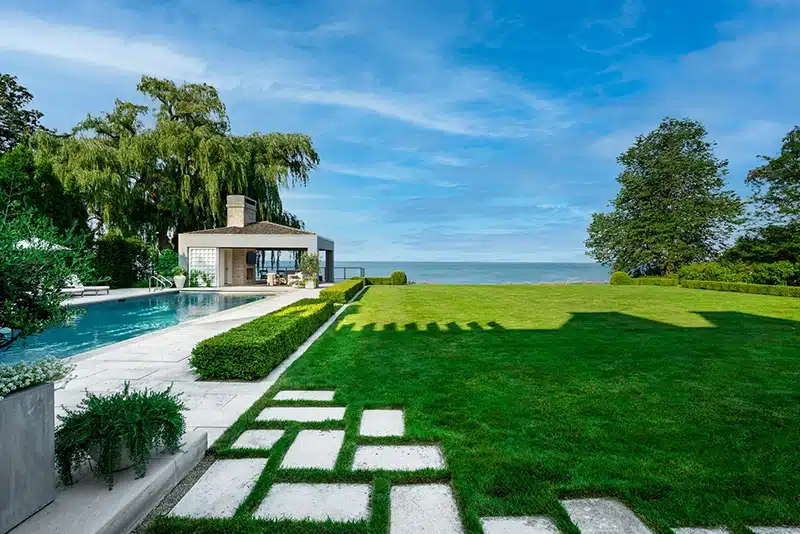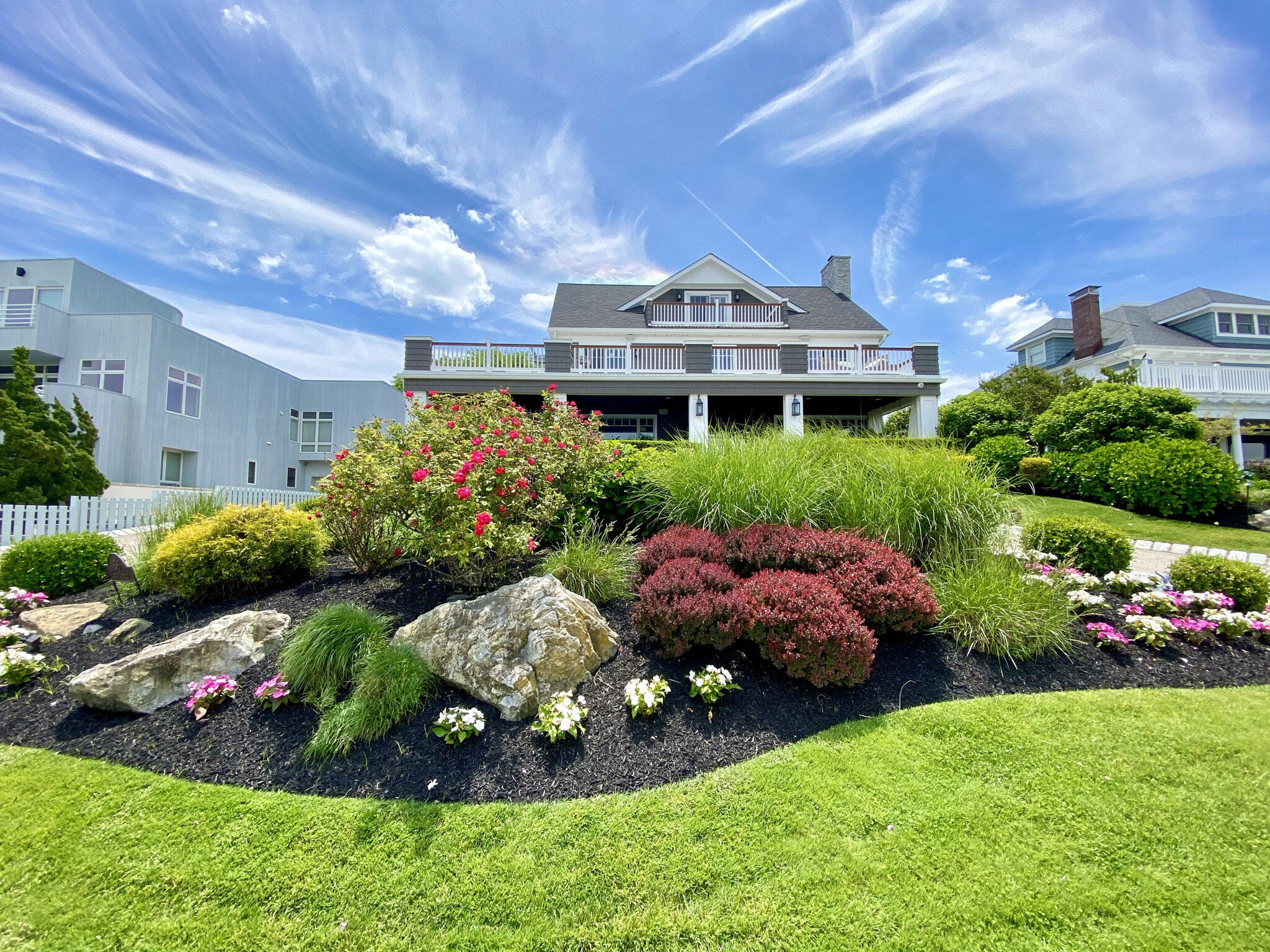Enhance Business Exteriors with Comprehensive Commercial Landscaping Solutions
The Importance of Comprehending Different Types of Landscaping for Your Yard
Recognizing the various types of landscaping is a vital component in crafting a garden that not just mirrors personal taste but additionally fulfills eco-friendly requirements. Each landscaping style-- be it formal, cottage, lasting, or urban-- provides distinctive benefits that can dramatically affect the total wellness and aesthetic appeals of your outside room.
Advantages of Landscape Design Expertise
Recognizing the basics of landscape design offers many advantages for both beginner and skilled gardeners alike. A solid grasp of landscaping concepts allows individuals to produce aesthetically attractive and practical outside areas that straighten with their personal choices and the specific qualities of their gardens.
One significant advantage is improved environmental health and wellness. Understanding of lasting practices and indigenous plants permits gardeners to cultivate environments that advertise biodiversity while lessening the demand for chemical fertilizers and chemicals. Additionally, comprehending dirt types and water drainage can result in healthier plant development and lowered erosion.
Landscaping expertise also improves the aesthetic worth of a property. By discovering concerning layout elements such as structure, range, and shade, garden enthusiasts can develop natural and welcoming landscapes that increase visual charm. This not just elevates personal pleasure however can additionally boost residential property worth.
Moreover, educated garden enthusiasts can save time and sources. Identifying the right plants for details problems, such as light and dampness degrees, makes certain that initiatives are not wasted on unsuitable choices. Eventually, a detailed understanding of landscape design equips individuals to make educated decisions, fostering a more rewarding horticulture experience.
Review of Landscape Design Kinds
Landscape design includes a range of approaches and designs, each customized to fulfill the unique demands and preferences of garden enthusiasts. Understanding these diverse types is important for developing an outside area that aligns with ecological factors to consider and private tastes.
One popular kind is conventional landscaping, identified by organized layouts, distinct flowerbeds, and making use of symmetrical plantings. This style usually highlights a sense of order and consistency within the garden - Landscaping Company. On the other hand, naturalistic landscaping concentrates on resembling the appeal of nature, utilizing organic kinds and native plants to develop a much more kicked back and informal setting
Sustainable landscape design has gained traction, advertising green practices that conserve water and minimize chemical use. This technique often includes xeriscaping, which uses drought-resistant plants appropriate for dry climates. Furthermore, city landscape design addresses the challenges of restricted room in city environments, commonly utilizing vertical gardens and roof rooms to take full advantage of plant.
Formal Landscape Design Clarified
Characterized by its careful layout and structured aspects, official landscaping develops an atmosphere of beauty and class in exterior spaces. This style highlights proportion, geometric forms, and well-defined lines, commonly including manicured hedges, topiaries, and orderly flower beds. The general result is a refined and refined atmosphere that accentuates building attributes and enhances the beauty of the surrounding landscape.
In formal landscaping, paths are normally straight and might be lined with consistent products such as brick or rock. These paths commonly bring about centerpieces such as fountains, statues, or ornamental trees, Learn More further enhancing the structured nature of the design. Shade schemes tend to be a lot more restricted, concentrating on harmonious combinations that promote a peaceful atmosphere.
Water features in formal landscapes are generally created with accuracy, usually showing up as circular or rectangular swimming pools. The mindful positioning of plants is important, with varieties picked for their capability to preserve a tidy look throughout the periods. In general, formal landscape design is excellent for those that value order and sophistication, offering a timeless visual that can dramatically raise the value and allure of outside spaces.
Home Garden Characteristics
Home yards commonly evoke a feeling of charm and whimsy, mixing a variety of plants in a relatively haphazard yet unified setup. Defined by their lavish, informal design, these gardens commonly feature a diverse mix of flowering perennials, annuals, vegetables, and natural herbs. This varied planting not only produces aesthetic interest however additionally attracts helpful insects and promotes a well balanced ecosystem.
A crucial feature of cottage gardens is their use typical materials and frameworks. Rock pathways, rustic fence, and wood trellises are generally incorporated to enhance the garden's charming allure. Additionally, the incorporation of seating locations, such as benches or arbors, motivates leisure within this tranquil setting.
Shade plays a significant role Learn More Here in cottage gardens, with a focus on soft pastels and vivid hues that evoke a sense of nostalgia. Flowers like hollyhocks, roses, and foxgloves are staples, commonly intermingled with great smelling natural herbs such as lavender and thyme.
Home gardens reflect a viewpoint of accepting nature's unpredictability, leading to a distinct and inviting space. By focusing on biodiversity and visual beauty, they develop a picturesque setting for both yard fanatics and informal viewers alike.
Lasting Landscaping Practices
Incorporating sustainable landscape design techniques is important for creating eco-friendly yards that prosper while lessening their environmental impact. Commercial Landscaping. Sustainable landscaping concentrates on the reliable use sources, advertising biodiversity, and enhancing the native environment
One trick method is picking indigenous plants, which are well-adapted to regional problems and call for less water, plant food, and chemicals. This not only preserves sources but additionally supports local wild animals, including pollinators. Implementing water-efficient watering systems, such as drip irrigation or rain harvesting, even more conserves water while making certain that plants get adequate dampness.

Moreover, decreasing grass locations and incorporating hardscaping aspects can decrease maintenance and resource use. These techniques advertise a more sustainable landscape that needs less inputs and gives ecological benefits. By accepting these techniques, garden enthusiasts can create spaces that are not only lovely yet additionally contribute positively to the environment, promoting an unified balance between nature company website and human activity.

Final Thought
In conclusion, a detailed understanding of different landscape design types is important for developing a visually pleasing and environmentally lasting garden. Inevitably, embracing varied landscaping strategies promotes an unified connection in between outdoor rooms and their environments, advertising long-term eco-friendly balance.
Recognizing the various kinds of landscape design is a necessary component in crafting a yard that not just shows individual taste however additionally satisfies eco-friendly needs. Each landscaping design-- be it formal, cottage, lasting, or urban-- offers distinctive advantages that can substantially affect the overall health and wellness and visual appeals of your outside room. In contrast, naturalistic landscaping concentrates on resembling the beauty of nature, using indigenous plants and natural forms to develop a more unwinded and casual setting.
Additionally, urban landscaping addresses the obstacles of minimal room in city environments, typically making use of upright gardens and rooftop rooms to take full advantage of plant.
In final thought, a thorough understanding of different landscaping types is crucial for developing an aesthetically pleasing and environmentally sustainable yard. (Landscaping Company)